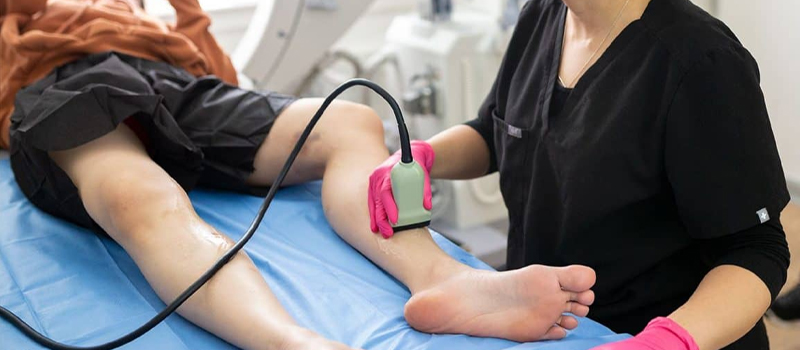Chronic venous insufficiency is a condition that happens when blood cannot flow back to the heart from the legs as a result of faulty valves. This disorder isn’t usually life-threatening, but it can cause pain and swelling in your legs. There are several types of CVI, and symptoms of the disorder can range from mild to severe.

Your veins are the blood vessels responsible for carrying blood from every part of your body back to your heart. The blood in your veins flows toward your heart against the force of gravity. Your leg muscles squeeze and push blood upward in a process called muscular pump action. One-way valves inside the veins ensure that this process works correctly: they let blood flow one way, up toward your heart as you move.
The following are the different types of chronic venous insufficiency:
Primary chronic venous insufficiency: With this type, there’s a problem with vein valves.
Secondary chronic venous insufficiency: This is when another condition causes CVI.
Superficial chronic venous insufficiency: This is when there’s a problem with veins close to the surface of your skin.
Deep chronic venous insufficiency: The blocked veins are deep inside your body in this type.
Signs and symptoms include:
• Skin discoloration
• Swollen legs
• Aching or heavy feeling in your legs
• Skin ulcers, which are also known as sores Itching around one or more of your veins
• Diagnosis of CVI
Diagnosis

Your doctor may order a variety of tests to help diagnose CVI Ultrasound. This is the most frequently used test. An ultrasound uses high-frequency sound waves to create an image of your leg veins. Venography. This imaging test involves injecting a special dye (contrast material) into a vein, usually in your foot. X-rays then are taken to show the dye moving through the veins in your legs.
MRI (magnetic resonance imaging). This test uses powerful magnets and radio waves — not X- rays — to produce detailed images of internal body structures. This can help your doctor assess the blood flow and condition of both blood vessels and soft tissues in your legs.
Treatment

Treatment for CVI depends on how severe your symptoms are. Some people have mild symptoms that may improve without treatment. Others may have more severe symptoms that require treatment. Treatment options include:
Compression therapy: compression helps to reduce swelling and improve blood flow so that blood doesn’t pool in your legs. It involves wearing compression stockings or bandages during the day and night while sleeping. Lifestyle changes: These include losing weight if you are overweight, staying active, and avoiding sitting or standing for long periods. Exercise helps to improve blood flow in your legs.
Surgery may be recommended if you have severe CVI or if your CVI isn’t improving with other treatments. The success of surgery depends on the severity of the disease. Vena cava filter placement: A vena cava filter is a small device placed in the inferior vena cava to prevent clotting of blood from moving from the legs to the lungs (pulmonary embolism). This treatment is usually reserved for people who can’t take blood thinners for health reasons.
Ambulatory phlebectomy: In ambulatory phlebectomy, your surgeon makes a series of tiny incisions near bulging varicose veins and uses a specialized hook to remove them through the incisions. The procedure is typically done under local anesthesia in your doctor’s office. At Washington Vascular Specialists, we focus on state-of-the-art minimally invasive procedures that are safer than traditional surgery for faster recovery times and excellent results.



